School Highlights
Los Angeles ORT College-Los Angeles Campus serves 119 students (100% of students are full-time).
The college's student:teacher ratio of 11:1 is lower than the state community college average of 32:1.
Minority enrollment is 70% of the student body (majority Hispanic and Asian), which is less than the state average of 77%.
Quick Stats (2025)
- Enrollment: 119 students
- Student:teacher ratio: 11:1
- Minority enrollment: 70%
- Source: Verified school update
Top Rankings
Los Angeles ORT College-Los Angeles Campus ranks among the top 20% of public schools in California for:
Category
Attribute
School Resources
Completion Rates
School Overview
The teacher population of 11 teachers has stayed relatively flat over five years.
Los Angeles ORT College-Los Angeles Campus
(CA) Community College Avg.
Carnegie Classification
Associate's Colleges: High Vocational & Technical-Mixed Traditional/Nontraditional
Baccalaureate/Associate's Colleges: Associate's Dominant
Institution Level
At least 2 but less than 4 years
At least 2 but less than 4 years
Institution Control
Private not-for-profit
Public
Total Faculty
11 staff
294 staff
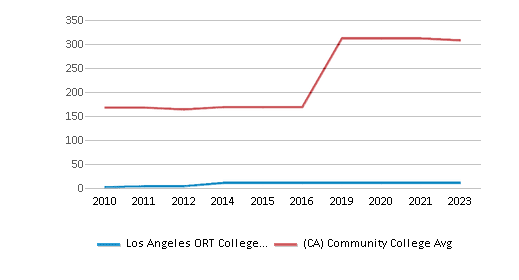
Number of Programs Offered
9
12
Student Body
The student population of Los Angeles ORT College-Los Angeles Campus has stayed relatively flat over five years.
The student:teacher ratio of 11:1 has stayed the same over five years.
The Los Angeles ORT College-Los Angeles Campus diversity score of 0.74 is more than the state average of 0.70. The school's diversity has stayed relatively flat over five years.
Total Enrollment
119 students
2,311 students
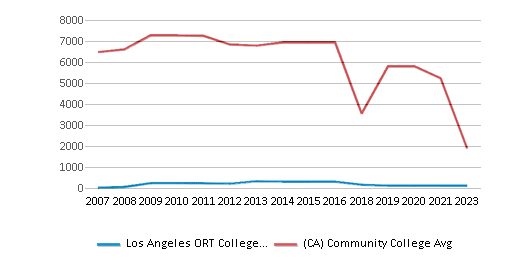
Student : Teacher Ratio
11:1
32:1
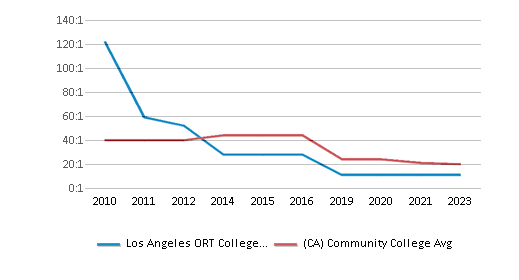
# Full-Time Students
119 students
1,232 students
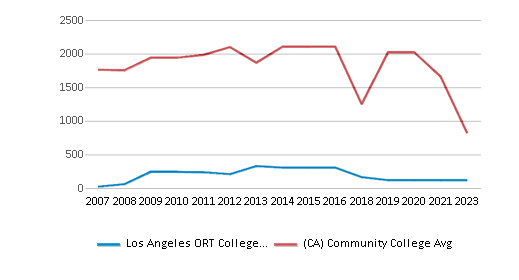
# Part-Time Students
n/a
8,299 students

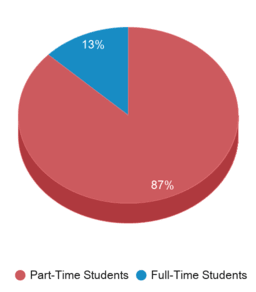
# Enrollment Undergraduate
561 students
240 students
# Full-Time Undergraduate Students
119 students
1,155 students
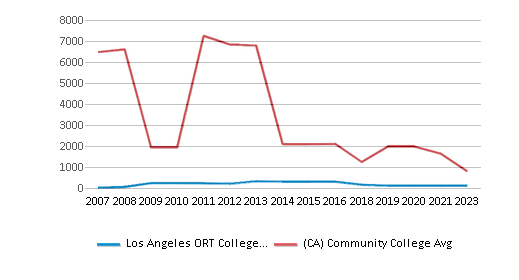
# Full-Time Graduate Students
n/a
63 students
# Part-Time Undergraduate Students
n/a
8,457 students
# Part-Time Graduate Students
n/a
10 students
Total Dormitory Capacity
n/a
140 students
% Asian
27%
13%
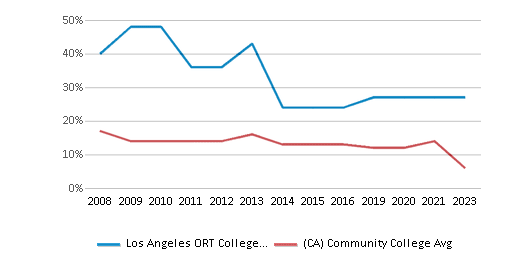
% Hispanic
28%
47%
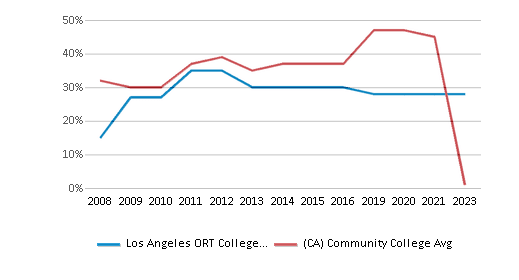
% Black
14%
7%
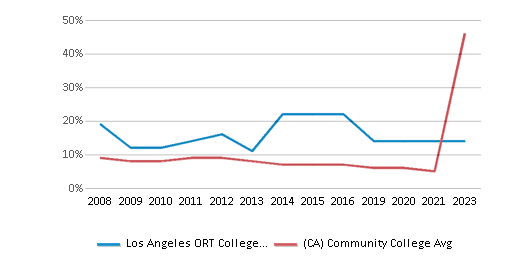
% White
30%
23%
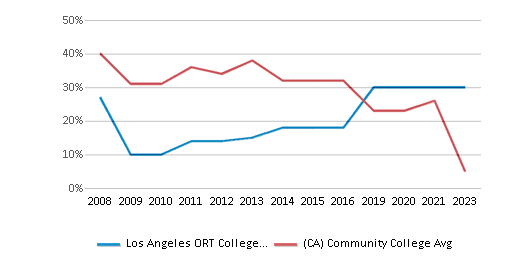
% Hawaiian
n/a
1%
% Two or more races
n/a
5%
% Non Resident races
1%
1%
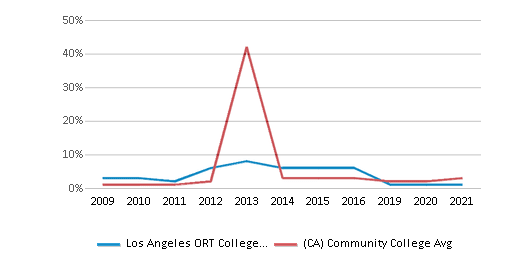
% Unknown races
n/a
3%
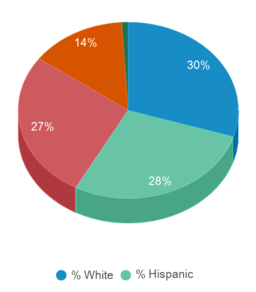
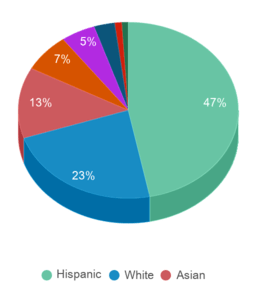
Diversity Score
0.74
0.70
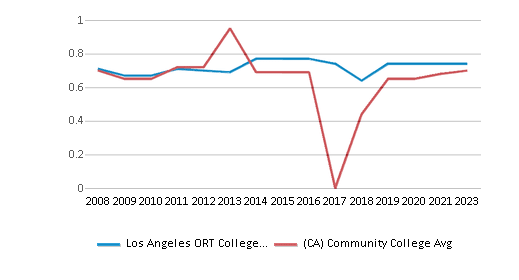
College Completion Rate (Students who graduate in less than 4 years)
92%
30.56%
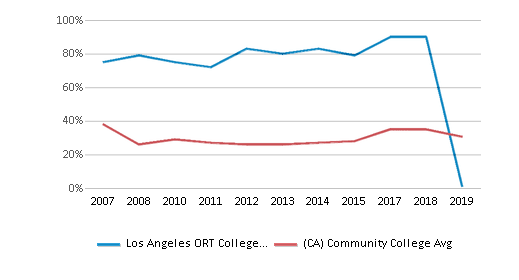
College Completion Rate (Students who graduate in 4 years or more than 4 years)
n/a
0.4304%
Average Graduate Earnings (10 Years)
$27,200
$34,700
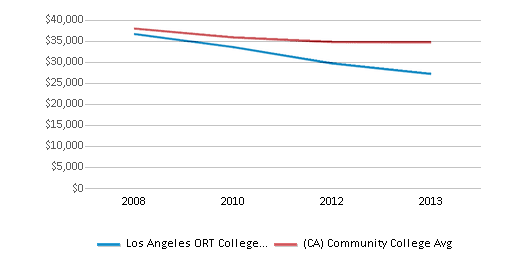
Tuition and Acceptance Rate
% Students Receiving Some Financial Aid
99%
85%
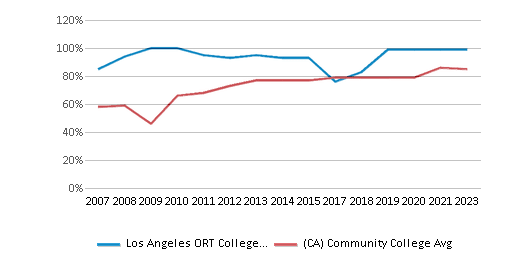
Median Debt for Graduates
$11,006
$10,376
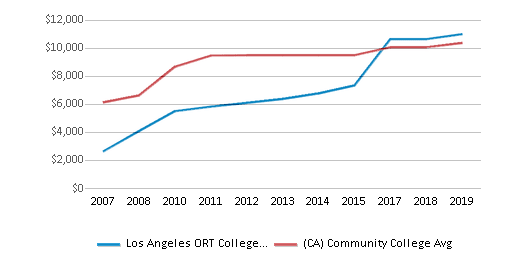
Median Debt for Dropouts
$5,500
$6,000
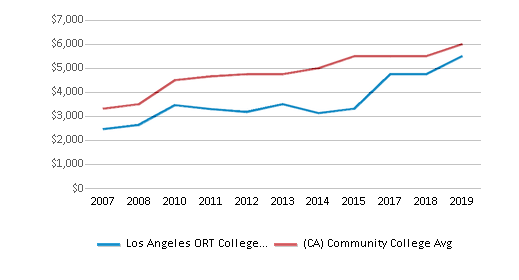
Acceptance Rate
n/a
92%
Source: 2023 (or latest year available) Integrated Postsecondary Education Data System (IPEDS) , School Administrators
Frequently Asked Questions
What is Los Angeles ORT College-Los Angeles Campus's ranking?
Los Angeles ORT College-Los Angeles Campus ranks among the top 20% of community college in California for: Percent of students receiving financial aid and Highest completion rates.
In what neighborhood is Los Angeles ORT College-Los Angeles Campus located?
Los Angeles ORT College-Los Angeles Campus is located in the Central LA neighborhood of Los Angeles, CA. There are 1 other community '.college.' located in Central LA.
Recent Articles

Obtaining Your Bachelor's Degree at a Community College
Explore the evolving landscape of community colleges offering bachelor's degrees, addressing affordability, accessibility, and workforce needs.

A to Z of Community College Certificates and Courses
From business and healthcare to technology and skilled trades, the article showcases the breadth of options available to students seeking to enhance their knowledge, develop new skills, or pursue career advancement.

What is a Community College?
This comprehensive guide explains what a community college is, its history, and its role in higher education. It covers the types of programs offered, differences from four-year colleges, benefits of attending, and important considerations for prospective students, providing valuable insights for those exploring educational options.





